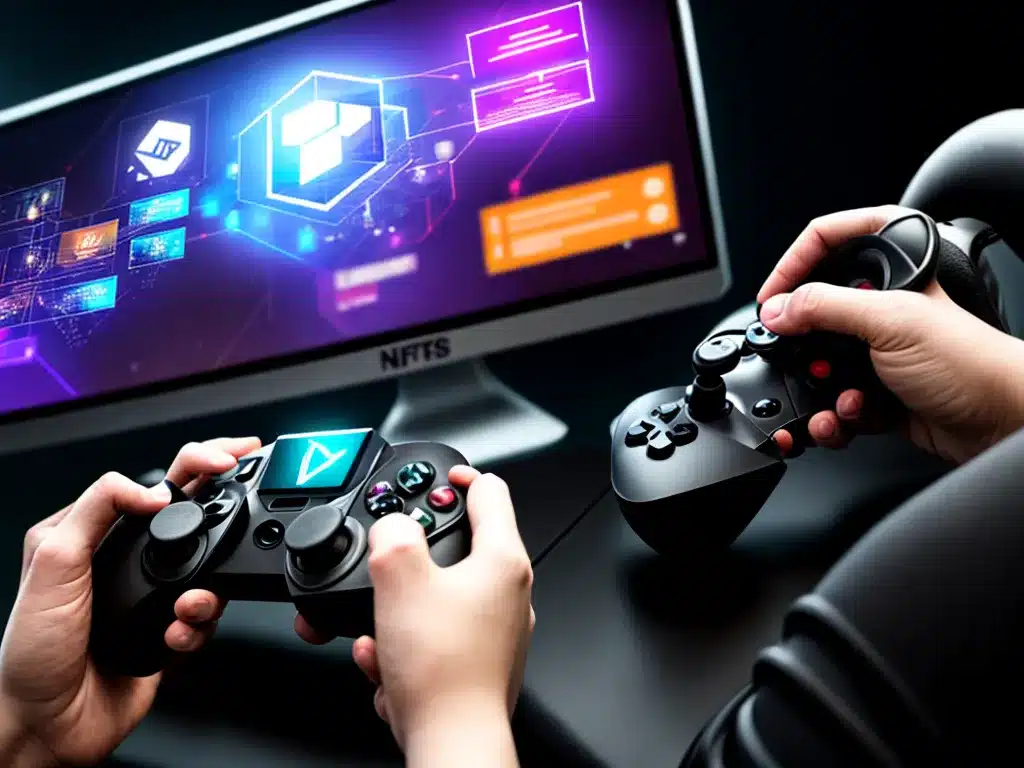What are NFTs?
NFTs, or non-fungible tokens, are unique digital assets that represent ownership of a specific item like art, videos, music, and more. NFTs are stored on blockchains like Ethereum and allow digital items to be tokenized and bought, sold or traded. Each NFT has a unique identification code and metadata that distinguishes it from any other NFT, even if the underlying asset is identical. This allows NFTs to prove authenticity and ownership.
Unlike cryptocurrencies which are fungible (interchangeable), NFTs are not interchangeable and have unique properties. This makes them ideal for representing digital collectibles, assets, and access rights. For example, an NFT of a digital artwork would contain identifying information that traces it directly back to the original creator.
The ownership of an NFT is recorded on the blockchain, allowing for trades and transfers to be securely tracked. NFTs are revolutionizing digital ownership and the collectibles market.
How NFTs Work
NFTs are created when token standards like ERC-721 are implemented on a blockchain like Ethereum.
To create an NFT:
-
The digital asset is uploaded and minted into an NFT using smart contracts.
-
Metadata like ownership records, timestamps, digital signatures and other identifying information is added.
-
The NFT is listed on NFT marketplaces where bids can be placed using cryptocurrency.
-
When an NFT is sold, the ownership transfer is recorded on the blockchain while the digital asset is transferred to the buyer’s cryptocurrency wallet.
NFT transactions are transparent and traceable due to the inherent record-keeping functionality of blockchains. This provides proof of ownership and prevents duplication or fakes.
NFTs in Gaming
NFTs have opened up new potential in the gaming industry by enabling true digital asset ownership and interoperability across different games and platforms. Here are some major use cases:
Digital Collectibles
-
NFTs can represent in-game assets like avatars, skins, artifacts, and cards. These provide players with verifiable ownership of unique digital items.
-
Collectible NFTs can appreciate in value and be traded on marketplaces like NBA Top Shot.
True Digital Ownership
-
NFTs give players actual ownership of in-game assets which can be used across games and virtual worlds.
-
Players can buy, sell or rent NFT-based assets like lands, cars, swords on open marketplaces.
Play-to-Earn Model
-
Blockchain games like Axie Infinity use the play-to-earn model where players earn tradable NFT assets for playing.
-
NFTs enable new token-based gaming economies where players can earn real money.
Interoperability & Portability
-
NFTs can seamlessly move across different games, virtual worlds and metaverses. This provides unprecedented digital asset portability.
-
NFT-based decentralized virtual worlds allow assets to be carried across different games.
Benefits of NFTs in Gaming
NFTs provide several key benefits which are transforming gaming:
-
True digital scarcity – Each NFT is provably unique and limited in supply which creates value.
-
Proof of ownership – Blockchain provides transparent and immutable ownership records.
-
Interoperability – Assets can freely move across multiple games and metaverses.
-
Accessibility – Reduces barriers for player participation and ownership of assets.
-
New revenue models – Play-to-earn and trading NFTs enable new token-based economies.
-
Reduced fraud – Prevent counterfeiting and duplication of rare digital items.
-
Persistent value – Digital assets maintain value outside games and can be traded.
Challenges for Mainstream Adoption
While promising, there are some challenges to be addressed before NFT gaming gains mass adoption:
-
Speculation & Volatility – NFT prices fluctuate wildly driven by speculation rather than inherent value.
-
Scalability – Blockchains need greater transaction throughput for NFT games to scale.
-
Usability – Onboarding to crypto wallets and NFT platforms has a learning curve for average users.
-
Environmental concerns – Energy-intensive proof-of-work blockchains have drawn criticism regarding sustainability.
-
Legal uncertainties – Ambiguous regulations regarding blockchain assets across different jurisdictions.
The Future of NFT Gaming
NFTs represent an evolutionary step in digital asset ownership in gaming. While still in its early days, NFT gaming promises to provide players greater creative and economic freedom.
As blockchain technology evolves and matures, NFT games will deliver richer player experiences and enable truly open, interoperable virtual worlds. However, realizing this potential requires addressing scalability, environmental impact, usability and speculative excess in the current market.
If key challenges are met, NFTs could propel gaming to new heights – enabling players to truly own assets, reshape virtual worlds and create new gaming economies. The next few years will prove decisive in determining if NFT gaming will transition into the mainstream or remain a niche segment. Nevertheless, NFTs have already provided a compelling glimpse into the future possibilities of digital asset ownership.













